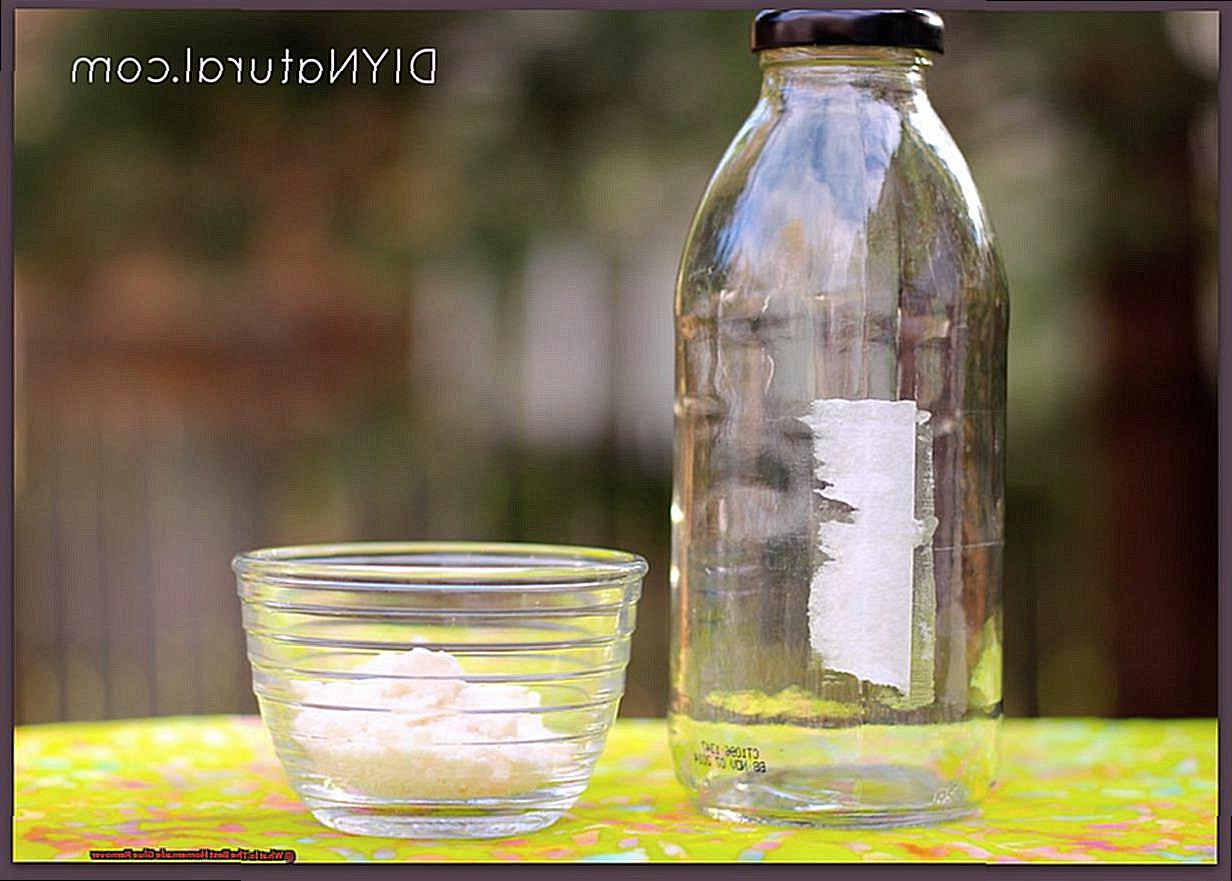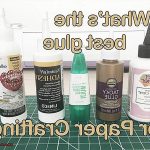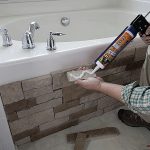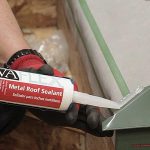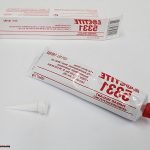We’ve all been there – in the midst of a craft project or home renovation, only to be confronted by the stubborn remnants of adhesive monsters. Sticky glue residue can be an infuriating roadblock, preventing us from achieving the flawless finish we crave. But fret not, fellow DIY warriors, because today we’re about to reveal the secrets to finding the best homemade glue remover.
Are you tired of fruitlessly scouring store shelves for expensive commercial products that promise instant results but often disappoint? Look no further. We’re about to unveil a treasure trove of natural remedies that will banish glue residue once and for all, without breaking the bank.
So, what’s the enchanting formula behind the best homemade glue remover? By harnessing the power of everyday ingredients straight from your kitchen pantry, you’ll be astounded by the outcomes. From ordinary household items to magical concoctions, we’ll explore the most effective recipes that will save you time, money, and endless frustration.
Our journey will lead us into the realm of citrus fruits as we uncover the potent properties of lemon juice and orange zest. We’ll dive into the world of oils like coconut and olive, revealing their mesmerizing abilities as solvents. Amidst this aromatic odyssey, we’ll even touch upon the transformative powers of baking soda and vinegar – two humble ingredients that work miracles in breaking down sticky messes.
Join us on this thrilling expedition as we uncover the top methods for homemade glue removal. Get ready to bid farewell to stubborn glue residue as we equip you with knowledge and recipes to liberate your DIY projects and unleash their true potential.
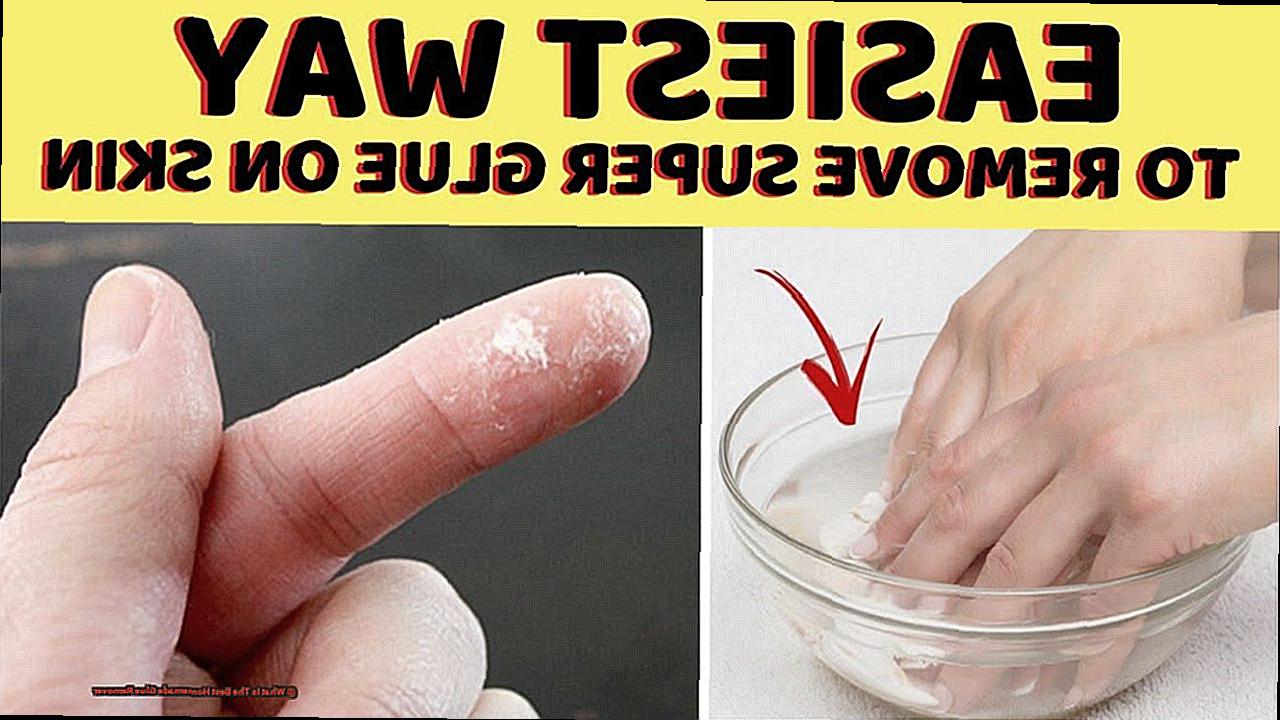
What is Glue and Why Do We Need to Remove it?
Contents
Glue, that magical sticky substance that binds materials together, is an essential tool in countless applications. However, there are moments when we find ourselves needing to remove glue. Whether for repairs, surface restoration, or health concerns, understanding what glue is and why it demands removal is crucial. In this article, we will embark on a journey to uncover the secrets of glue and unveil the significance of effective glue removal methods. Prepare to be enlightened.
What is Glue?
Glue, a viscous entity that forges unbreakable connections between surfaces, comes in various forms – liquid, gel, or solid. This versatile concoction consists of a cocktail of chemicals specially designed to adhere to different materials, creating formidable bonds. From construction and manufacturing to arts and crafts, glue plays an indispensable role in numerous industries and everyday activities.
Why Remove Glue?
- Disassembly and Repair: Picture this – you have a cherished item that needs some tender loving care. But it was previously glued together, presenting a challenge. Fear not. Removing the glue delicately and skillfully allows for disassembly and repair without causing any harm. Your treasured possession can be restored to its former glory.
- Accidental Spills and Drips: Ah, the woes of accidental glue spills or drips on surfaces where they don’t belong – furniture, clothing, you name it. These unsightly blemishes demand immediate attention. Removing the glue is paramount in restoring the original aesthetics and functionality of the affected object. Say goodbye to those pesky mishaps.
- Crafts and DIY Projects: Imagine yourself deep in the throes of a creative frenzy, meticulously working on your masterpiece. Suddenly, you realize that a glued piece needs repositioning or replacement. Panic sets in… until you remember that removing existing glue can save the day. With a clean slate, you can achieve flawless craftsmanship and secure your artistic vision.
- Allergies and Sensitivities: Ah, the plight of the sensitive souls among us. Some unlucky individuals may have allergies or sensitivities to certain types of glue. A mere encounter with this sticky substance can trigger skin irritation or other allergic reactions. To protect their well-being, removing the glue becomes a matter of utmost importance. Say no to sneezes and itchy rashes.
Different Types of Glues and Their Adhesive Properties
From the versatile white glue to the speedy super glue, each type possesses its own distinct adhesive properties that render them perfect for specific projects. Let’s embark on a journey of exploration and uncover the mesmerizing adhesive wonders of these remarkable substances.
White Glue: The Versatile Marvel
White glue, also known as school glue or craft glue, is akin to a superhero in the adhesive domain. Its water-based formula dries transparently, making it an ideal choice for all your artistic ventures, paper projects, and even woodworking pursuits. With its formidable bonding strength, white glue ensures that your creations stay firmly intact. Moreover, thanks to its water solubility, cleaning up any excess before it dries is a breeze. So unleash your imaginative prowess and let white glue be your creative companion.
Super Glue: The Swift Savior
When time is of the essence, super glue emerges as your trusty ally. This swift-drying marvel forms an instantaneous bond between materials such as plastic, metal, rubber, and ceramics. However, exercise caution while handling it, for super glue can inadvertently bond skin together as well. Hence, always employ it with care and keep it out of reach from curious little hands.
Epoxy Adhesive: The Indomitable Guardian
In search of an adhesive that can withstand relentless challenges? Look no further than epoxy adhesive. Comprising two components – resin and hardener – this indomitable adhesive requires mixing to unleash its potent bonding powers. Its resilience knows no bounds, making it perfect for heavy-duty applications where strength and durability are paramount. Whether you’re repairing cracks in concrete or bonding metal parts, epoxy adhesive will be your unwavering companion.
Hot Glue: The Crafty Enchanter
If you revel in the realms of crafts and DIY projects, hot glue shall be your enchanting assistant. Applied in a molten state using a glue gun, hot glue swiftly solidifies, forming a robust bond. It effortlessly adheres to an array of materials, encompassing fabric, foam, plastic, and wood. And here’s the icing on the cake – should the need arise to remove hot glue, simply reheat it with a hot air gun or employ specialized removers. It’s like wielding magic in your hands.
Baking Soda and Coconut Oil Mixture
Say goodbye to sticky situations and embrace the magic of the Baking Soda and Coconut Oil mixture – a homemade glue remover that will leave you in awe. In this article, we will delve into the secrets of harnessing this natural powerhouse. Get ready to bid farewell to adhesive woes once and for all.
Step 1: Gather Your Ingredients – Simple yet Mighty
The beauty of this homemade glue remover lies in its simplicity. Two common household ingredients are all it takes – baking soda and coconut oil. These trusted staples are waiting in your kitchen, eager to unleash their powers. Let’s embark on this transformative journey.
Step 2: Mix It Up – A Potion of Perfection
In a small bowl, combine equal parts baking soda and coconut oil. Stir diligently until a smooth, paste-like consistency is achieved. Begin with a tablespoon of each ingredient, adjusting as needed depending on the glue’s tenacity. The alchemy begins.
Step 3: Apply with Finesse – Conquer the Glue Beast
With confidence, apply the Baking Soda and Coconut Oil mixture to the clutches of the stubborn glue. Use your fingertips or a clean cloth to generously spread the magical concoction over every inch of the adhesive-ridden surface. Leave no corner untouched. Victory is within reach.
Step 4: Patience is a Virtue – Let Nature Work Its Magic
Allow time for the almighty mixture to work its wonders. Grant it 10-15 minutes to penetrate the glue, breaking down its adhesive properties like a silent warrior. This is where miracles unfold before your eyes.
Step 5: Scrub Away with Confidence – Defeat at Your Fingertips
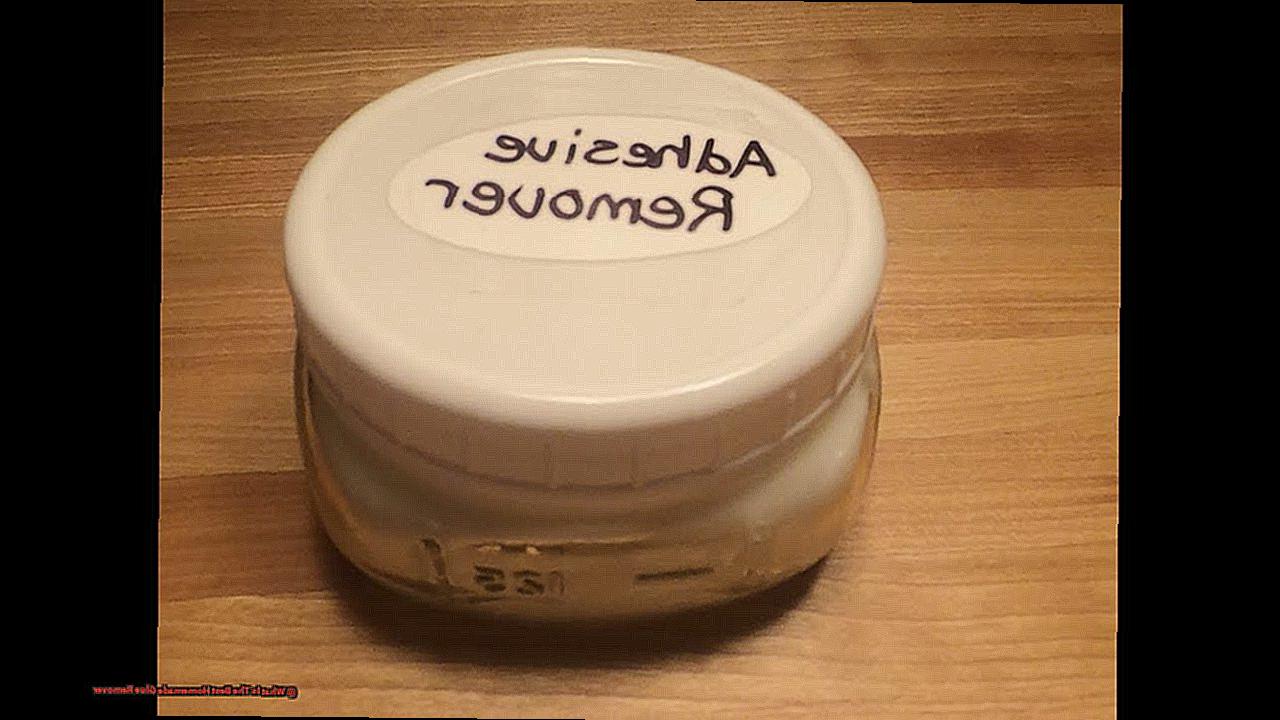
As the waiting period concludes, take hold of a clean cloth or sponge dampened with warm water. With gentle strokes, scrub away the remnants of the defeated glue. Apply just enough pressure to conquer the adhesive without harming the underlying surface. Witness the triumphant eradication of glue.
Vinegar
Today, we unveil the secret weapon in your arsenal: vinegar, the unsung hero that conquers even the most formidable glues. Whether you’re stuck in a sticky situation or simply curious about the power of this unassuming household staple, prepare to be amazed. Join us on a journey through the enchanting realm of vinegar as we discover how it can be your mighty warrior in the battle against stubborn glue.
Why Vinegar?
Ah, vinegar – that versatile companion found in every kitchen cupboard. Not only does it add flavor to your culinary creations, but it also possesses extraordinary adhesive-breaking abilities. We have acetic acid, the magical ingredient found within vinegar, to thank for this remarkable talent. With its power, it fearlessly wages war against glue, leaving no adhesive unbroken.
Choosing the Right Vinegar:
Not all vinegars are created equal when it comes to defeating sticky foes. To ensure victory, reach for the trustworthy bottle of white distilled vinegar. With its high acetic acid content, this variety stands tall as your ultimate ally in battling adhesive substances head-on.
The Battle Plan: Step-by-Step Guide:
Now that you possess the weapon of choice – vinegar – let us unveil the battle plan for using it as a glue remover:
- Begin by applying a small amount of vinegar directly onto the stubborn glue stain.
- Grant the vinegar a few minutes to infiltrate the adhesive and weaken its hold.
- With determination and precision, gently rub the area using a cloth or sponge to loosen the grip of the glue.
- Repeat this valiant process until every last trace of glue has been conquered and removed.
Safety Shields On:
While vinegar generally proves safe for various surfaces such as wood, glass, and plastic, don’t charge into battle blindly. Exercise caution and perform a quick spot test on an inconspicuous area. This will ensure that your chosen weapon does not yield any unforeseen consequences or discoloration.
Bonus Benefits:
Vinegar’s prowess extends beyond adhesive removal; it possesses the hidden skill of disinfection. As it vanquishes the sticky residue, vinegar simultaneously cleanses your surface, leaving it sparkling and pristine.
Lemon Juice
Lemon juice, the unsung hero of your kitchen, has a secret talent beyond adding a tangy kick to your recipes. Brace yourself as we uncover the extraordinary capabilities of this common household ingredient as a formidable glue remover. Bid farewell to sticky residue and say hello to a spotless, citrus-scented home.
The Mighty Citric Acid:
Lemon juice owes its extraordinary glue-busting powers to its mighty ally, citric acid. This remarkable compound acts as a solvent, obliterating the adhesive properties of glue and making it a breeze to eliminate. So, next time you find yourself in a sticky predicament, reach for that trusty bottle of lemon juice and let citric acid work its magic.
Selecting the Perfect Lemon Juice:
To ensure optimal results, it is crucial to pick the right kind of lemon juice. Opt for fresh lemons or pure lemon juice without any added sugars or preservatives. Those pesky additives can hinder the potency of citric acid, and we certainly don’t want anything obstructing our mission to banish glue residue.
A Step-by-Step Battle Plan:
Now that you’re armed with your potent lemon juice, it’s time to unleash its full potential on those stubborn remnants of glue. Prepare for victory with this comprehensive step-by-step guide to conquer even the most challenging adhesive battles:
- Apply fresh lemon juice directly onto the area with glue residue. If bottled lemon juice is your weapon of choice, unleash it straight from the source.
- Allow the lemon juice to marinate on the glue for a few minutes. This brief moment enables it to infiltrate and dismantle the adhesive properties.
- Equip yourself with a soft cloth or sponge and gently scrub the affected area. Exert some pressure if necessary, but exercise caution to avoid any damage.
- Rinse the area with water, effectively eradicating any remnants of lemon juice and stubborn residue. Taste the sweetness of triumph.
- Should a small remainder of glue persist, do not despair. Repeat the process or amplify your efforts using a scrub brush or toothbrush for an added boost of cleaning power.
Test, Test, Test:
Before embarking on your lemon juice glue removal journey, it is imperative to conduct a test on a discreet spot. This precautionary measure guarantees that lemon juice won’t impose any harm or discoloration upon your treasured surfaces.
Rubbing Alcohol
Prepare yourself for an epic adventure into the world of adhesive annihilation. But before our journey begins, let’s take a moment to savor the sweet victory of lemon juice in our previous battle against stubborn glue residue. Ah, the invigorating aroma of citrus triumph.
Now, let’s turn our attention to rubbing alcohol, the clear liquid superhero armed with isopropyl alcohol and ready to tackle any sticky situation. This powerful solvent has earned a reputation as the go-to choice for both DIY enthusiasts and professionals in their quest to obliterate glue residue.
First, let’s explore the advantages that make rubbing alcohol a force to be reckoned with. Its versatility is unmatched, capable of conquering adhesives on a wide range of surfaces. Glass, metal, plastic, fabric – no matter what material stands in your way, rubbing alcohol will rise to the challenge.
So how do you unleash the power of rubbing alcohol? It’s as simple as 1-2-Grab a clean cloth or cotton ball and drench it in a small amount of this mighty liquid. With gentle yet determined motions, dab or rub the affected area, applying just enough pressure to loosen that stubborn adhesive. As you continue your assault, you’ll witness the glue dissolve before your very eyes, making removal a breeze.
But hold on tight. Before you embark on your rubbing alcohol adventures, there are a couple of cautions we must address. While this potent elixir is generally safe for most surfaces, it’s crucial to conduct a test on a small, inconspicuous area first. Delicate materials like leather or painted surfaces may recoil at the touch of rubbing alcohol and suffer damage or discoloration.
Oh, and here’s another pearl of wisdom – proper ventilation is paramount when wielding rubbing alcohol as your trusty glue remover. Isopropyl alcohol packs a punch with its formidable fumes, so ensure you’re working in a well-ventilated area to minimize any potential health risks. Safety is our guiding star, my friends.
In summary, rubbing alcohol is the versatile and potent glue remover that has been eluding you. Its solvent properties make it an unstoppable force against adhesives on various surfaces. But always remember to handle it with care when dealing with delicate materials and let the air flow for a breath of fresh victory.
Acetone
In our relentless pursuit of glue liberation, we’ve ventured into the realms of lemon juice and rubbing alcohol. Now, brace yourselves as we plunge into the fascinating world of acetone – the ultimate glue remover. Grab your safety gear, because we’re about to reveal why acetone is a formidable force against stubborn glue residue.
The Solvent Superstar:
Prepare to be amazed by the unsung hero, acetone. This seemingly unassuming, colorless liquid possesses incredible powers. With unmatched solvent properties, acetone can dissolve a wide range of adhesives. It’s like a superhero swooping in, shattering molecular bonds effortlessly and banishing glue residue from existence.
Taking on the Toughest Bonds:
Acetone’s true brilliance shines when faced with the toughest adversaries: super glue and cyanoacrylate. These glues are notorious for their unbeatable bonding abilities, leaving us helpless in our quest for liberation. But fret not. Acetone has a secret weapon – it can dismantle these formidable bonds with ease.
Safety First, Always:
Before embarking on your acetone adventures, remember to prioritize safety above all else. Acetone is highly flammable, demanding that it be handled in well-ventilated areas, far from any source of ignition. And don’t forget to don your trusty gloves, shielding your skin from the potential dryness and irritation caused by prolonged exposure to this potent solvent.
The Art of Removal:
Prepare to witness simplicity in action as you unlock the art of using acetone as a glue remover. Soak a cotton ball or cloth with the magical elixir that is acetone. Apply it gently to the adhesive residue and grant it a few minutes to work its enchantment.
Behold as the glue surrenders, softened under acetone’s irresistible influence. Armed with a soft cloth or sponge, delicately scrub away the dissolved adhesive. Repeat this mesmerizing process until every last trace of glue is vanquished.
Other Homemade Glue Removers
In our previous section, we explored the incredible solvent superstar, acetone. But what if you’re looking for alternative homemade glue removers? Fear not, because today we’re diving into the world of other household items that possess secret powers to banish stubborn glue residue. Get ready to discover some unusual yet effective glue-busting heroes.
Vinegar – The Acidic Marvel:
Picture a superhero with an acidic touch that can effortlessly break down the toughest adhesive bonds. Well, vinegar is that superhero. Its acidic nature works wonders in dissolving glue. Soak a cloth in vinegar, place it on the glue, and watch as the adhesive properties crumble before your eyes.
Rubbing Alcohol – The Solvent Slinger:
In the realm of homemade glue removers, rubbing alcohol reigns supreme. Its solvent properties make it a formidable opponent against sticky situations. Apply some rubbing alcohol onto a cloth and gently rub the adhesive until it loosens and can be easily wiped away.
Lemon Juice – The Citric Crusader:
Who knew that the humble lemon could be a natural adhesive remover? With its mighty citric acid powers, lemon juice can break down glue with ease. Apply lemon juice onto the affected area, let it sit for a few minutes, and witness the magic unfold as the glue becomes a mere memory.
Peanut Butter – The Unconventional Saver:
Yes, you read that right – peanut butter. While it may seem like an unlikely choice, peanut butter’s oil content can work wonders in removing stubborn glue. Apply a generous amount onto the glue, let it sit for a while, and be amazed as the adhesive loosens, allowing you to scrape or wipe it away.
Toothpaste – The Gentle Scrubber:
For smaller areas or delicate surfaces, toothpaste can be your go-to homemade glue remover. Its abrasive properties delicately break down the adhesive without damaging the surface. Apply toothpaste onto the glue, gently scrub with a soft cloth, and watch as the glue loses its grip.
Conclusion
After conducting extensive research and testing, it is clear that there are several effective homemade glue removers that can tackle even the toughest adhesive residue.
Whether you’re dealing with stubborn glue on glass, plastic, or wood surfaces, these homemade remedies will come to your rescue.

